- europages
- >
- COMPANIES - SUPPLIERS - SERVICE PROVIDERS
- >
- metal ceramic heaters
Results for
Metal ceramic heaters - Import export

XIAMEN INNOVACERA ADVANCED MATERIALS CO., LTD
China
Product Specification Application: Mainly applied to the electronic soldering iron Voltage: 110VAC Heating Resistance: 37Ω±15% Dimension: L80*φ5.0mm Electrode: Welding 2 nickel wires on the surface
Request for a quote
XIAMEN INNOVACERA ADVANCED MATERIALS CO., LTD
China
Product Specification Usage: Mainly applied to model 933 electronic soldering iron Voltage: 220VAC Heating Resistance: 140Ω±10% Dimension: L60*φ3.8mm Electrode: Welding 4 nickel wires on the surface
Request for a quote
XIAMEN INNOVACERA ADVANCED MATERIALS CO., LTD
China
Product Specification: Application: Used for 936 soldering station Voltage: 24VAC Heating Resistance: 3.0±0.3Ω (23℃±2℃) Dimension: L60*φ3.8mm Electrode: Welding 4 nickel wires on the surface
Request for a quote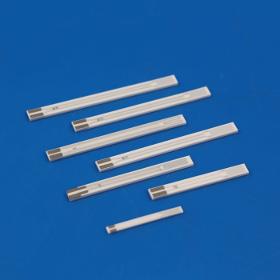
XIAMEN INNOVACERA ADVANCED MATERIALS CO., LTD
China
Planar ceramic heater oxygen sensors are subject to extreme conditions. A properly functioning oxygen sensor forms the basis for reliable engine operation and thus fuel economy, low pollutant emissions, and good exhaust gas values. Oxygen sensors with planar ceramic heater characteristics: ● Quick ignition time ● Good insulation performance ● Strong resistance to high temperature and poisoning ● Long lifetime ● Pump current switch type, conventional switch type, air-fuel ration type, and wide range type are available Appliaction: Plate Ceramic Heater for Automobile / Oxygen Sensor
Request for a quote
XIAMEN INNOVACERA ADVANCED MATERIALS CO., LTD
China
Product Specification Application: Mainly applied to the electronic soldering iron Voltage: 110VAC Heating Resistance: 310Ω±10% Dimension: L60*φ3.8mm Electrode: Welding 2 nickel wires on the surface
Request for a quoteDo you sell or make similar products?
Sign up to europages and have your products listed
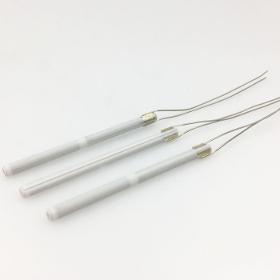
XIAMEN INNOVACERA ADVANCED MATERIALS CO., LTD
China
Ceramic Heater for Soldering iron & Station: Alumina Ceramic Heaters are produced by implementing unique metallization and ceramic lamination processes. Due to the advanced manufacturing techniques utilized in the electric element, Alumina Heaters can provide higher reliability than ever before.Currently, applications include use as innovative types of heaters in the automotive, medical and semiconductor industries. a.Based material: white alumina ceramic, and the content of alumina is no less than 95%.The tungsten slurry is printed on the ceramic tape, laminated by hot pressing, and thensintered under the protection of a hydrogen atmosphere at 1650 ° C b.Ni-wires:N6 Ni-wires with 0.6mm diameter c.Brazing material: siliver-copper braging alloy Application: We are producing High Quality 24V 110V 220V Heating Element for Soldering Station with the advantages of energy-efficient,long lifetime,high insulation,super fast heatin up and eco-friendly.
Request for a quote
XIAMEN INNOVACERA ADVANCED MATERIALS CO., LTD
China
Planar ceramic heater oxygen sensors are subject to extreme conditions. A properly functioning oxygen sensor forms the basis for reliable engine operation and thus fuel economy, low pollutant emissions, and good exhaust gas values. Oxygen sensors with planar ceramic heater characteristics: ● Quick ignition time ● Good insulation performance ● Strong resistance to high temperature and poisoning ● Long lifetime ● Pump current switch type, conventional switch type, air-fuel ration type, and wide range type are available Appliaction: Plate Ceramic Heater for Automobile / Oxygen Senser
Request for a quote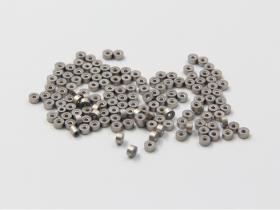
XIAMEN INNOVACERA ADVANCED MATERIALS CO., LTD
China
In a development that could have a significant impact on the electronics industry, the latest ceramic metallized insulators are making strides in enhancing semiconductor packaging and related applications. These insulators offer a range of practical benefits that can improve the performance and durability of electronic components. Let’s take a closer look at what sets them apart: Key Features of Ceramic Metallized Insulators: 1. Stability and Strength: The ceramic material employed in these insulators boasts an even texture, ensuring every batch maintains stable quality and flexural strength. This consistency in material quality is pivotal for the reliability of electronic components. 2.Dense and Weldable Metal Layer: The metal layers in these insulators are densely applied, providing a smooth and even surface. This not only enhances their appearance but also makes them easy to work with, particularly in manufacturing processes.
Request for a quote
XIAMEN INNOVACERA ADVANCED MATERIALS CO., LTD
China
DBC (Direct Bonded Copper) tenique denotes a special process in which the copper foil and the al2o3 or AlN (one or both sides) are directly bonded under appropriate high temperature. The finished super-thin DBC substrate has excellent electrical isolation,high thermal conductivity, fine solderability and high bonding strength.It may be structured just lick PCB to get etched wiring and has high curreng loading capability .Therefore DBC ceramic substrates have become the base material of tuture for both the construction and the interconnection techniques of high power semiconductor electronic circuits and also have been the basis for "chip on boaed" technology which repre-sents the packaging trend in century. Specification >Metallization thickness: 25 ±10um >Nickel thickness:2~10um >Pin full strength: 4200kgf/cm2 avg. (at Φ3.0mm pin)
Request for a quote
XIAMEN INNOVACERA ADVANCED MATERIALS CO., LTD
China
High Hermeticity Metallized Ceramic Bushing /Innovacera Features: 1.Material: 96% Aluminia(AL2O3) 2.Coating Layer:Molybdenum-Mananese(Mo/Mn) 3.These metallized ceramics are ideal for high voltage, high vacuum and high pressure applicationos. So far the most widely-used and effective method for creating a leak-tight, robust joint between ceramic and metal is by brazing . A thin layer of metal deposited on a ceramic part enables brazing between ceramic and metal part that h as a different coefficient of thermal expansion. A layer of Molybdenum-Manganese is deposited with a typical thickness of 8 to 30 µm after sintering. The metallized surface receives a secondary coating of nickel to seal and improve wettability for later brazing.
Request for a quote
XIAMEN INNOVACERA ADVANCED MATERIALS CO., LTD
China
Metallized Ceramic Componenets: Innovacera supplies precision metallized ceramic parts in aluminum oxide ceramics for the medical, and aerospace industries. Through spray, needle, and brush coatings or screen printing our capabilities allow us to metallized on flat, cylindrical, and complex ceramic bodies. Moly-Manganese is the typical base coat materials used for metallization.In order to achieve the welding between ceramic and metal, the ceramic surface firmly adheres to a layer of the metal film, which is ceramic metallization.Refractory-metalized aluminum oxide ceramics widely use in power grid tubes, vacuum interrupters, and similar applications where metal to ceramic joints of exceptional strength and hermeticity is required. Specification >Metallization thickness: 25 ±10um >Nickel thickness:2~10um >Pin full strength: 4200kgf/cm2 avg. (at Φ3.0mm pin) Available Ceramic Composition >94%,96%,99%,99.
Request for a quote
XIAMEN INNOVACERA ADVANCED MATERIALS CO., LTD
China
Metallized Ceramic Componenets: Innovacera supplies precision metallized ceramic ring in aluminum oxide ceramics for the military,medical, and aerospace industries. Through spray, needle, and brush coatings or screen printing our capabilities allow us to metallized on flat, cylindrical, and complex ceramic bodies. Moly-Manganese is the typical base coat materials used for metallization.In order to achieve the welding between ceramic and metal, the ceramic surface firmly adheres to a layer of the metal film, which is ceramic metallization. Refractory-metalized aluminum oxide ceramics widely use in power grid tubes, vacuum interrupters, and similar applications where metal to ceramic joints of exceptional strength and hermeticity is required.
Request for a quote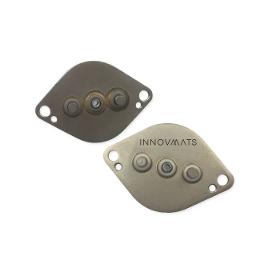
XIAMEN INNOVACERA ADVANCED MATERIALS CO., LTD
China
Mo Mn Ceramic Feedthrough Ceramic Vacuum Electrodes The Ceramic Surfaces for Brazing, the surface must be metallized. Compare to Glass seal, Ceramic seal has exceptional resistance to thermal and mechanical shock as well as corrosion. While it requires more complex manufacturing processes and sophisticated engineering, the price is obviously higher. Advantages of Ceramic-to-Metal Seals * More solid, durable hermetic seal and better electrical insulation * Used for more harsh conditions, such as high and low (cryogenic) temperature, corrosive, high pressure, and high vacuum environments * High mechanical strength, less fracture when applied to high vibration and high g-load conditions * Shows strong bond and an excellent seal with metals and alloys, such as copper and Cu alloys (CuNi) and to nickel and Ni alloys.
Request for a quote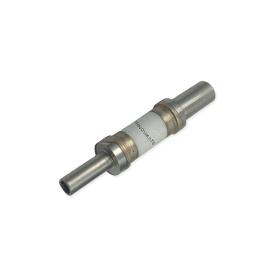
XIAMEN INNOVACERA ADVANCED MATERIALS CO., LTD
China
Ceramic-to-Metal Seal The Ceramic Surfaces for Brazing, the surface must be metallized. Compare to Glass seal, Ceramic seal has exceptional resistance to thermal and mechanical shock as well as corrosion. While it requires more complex manufacturing processes and sophisticated engineering, the price is obviously higher.
Request for a quoteResults for
Metal ceramic heaters - Import exportNumber of results
15 ProductsCountries
Company type